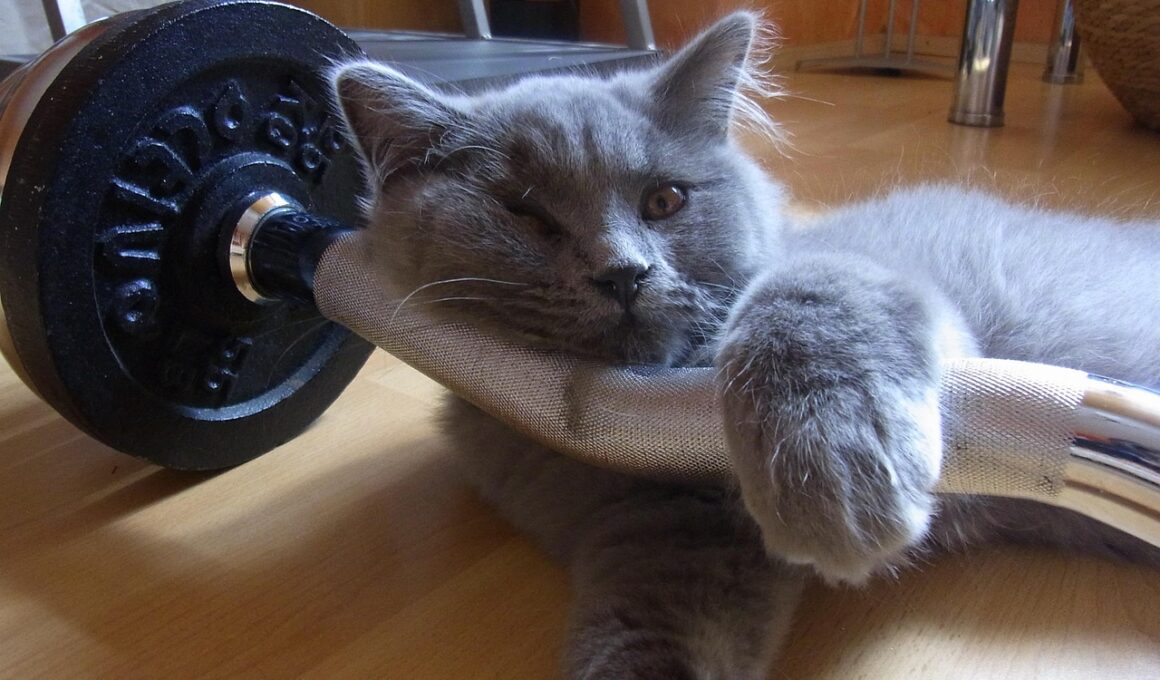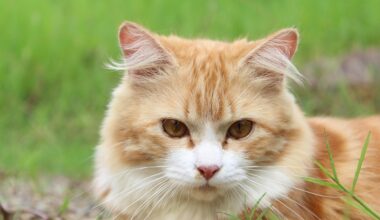The Science of Cat Learning: Insights Into Positive Reinforcement
Understanding cat psychology offers significant insights into effective training methods. One of the most effective approaches is positive reinforcement, which involves rewarding desired behavior to encourage its repetition. This strategy relies on the principle that behaviors followed by favorable outcomes are more likely to occur again. In essence, when you reward your cat for a desired action, such as using the litter box or scratching a post, you are positively reinforcing that behavior. Positive reinforcement might take various forms, including treats, praise, or affection. Offering your cat a tiny treat when they follow your commands will establish a positive association with that command. Likewise, verbal praise combined with physical affection can also serve as effective motivators. Understanding your cat’s individual preferences will help you maximize the training effect. Additionally, associating rewards closely with desired behaviors helps the cat link the action with the positive outcome. Regardless of the specific training goals, whether teaching tricks or enhancing litter box habits, positive reinforcement stands out as an effective strategy to shape feline behavior and improve overall well-being.
Another key factor in cat learning is timing. For positive reinforcement to effectively work, the reward must be given immediately after the desired behavior. This immediate feedback helps the cat clearly associate their action with the reward. For example, if you want your cat to respond to a command such as “sit,” offering a treat right after they obey enhances the learning process. Delaying the reward might confuse your cat, leading to uncertainty about which behavior was rewarded. Moreover, cats may lose interest if the reward is not given promptly. This showcases the necessity for careful attention to timing during training sessions. Consistency also plays a vital role in reinforcing behaviors. Regular practice and repetition improve a cat’s understanding and retention of learned behaviors over time. The more consistently you reward specific responses, the stronger the learning becomes. Additionally, avoid mixing rewards with corrections, as this may confuse your cat and send mixed signals. Instead, focus on positive experiences to create a trusting and enjoyable learning environment. By considering timing and consistency, you can enhance the effectiveness of positive reinforcement techniques in your training efforts.
Understanding Your Cat’s Preferences
Recognizing your cat’s unique personality is crucial in successful training practices. Each cat has distinct preferences that influence how they respond to rewards. For instance, some might prefer tasty treats as motivators, while others can be motivated by playtime or favorite toys. Observing your cat’s reactions to various rewards can help identify what they find most appealing. It’s essential to experiment with different treats or rewards to find what motivates your specific feline friend. You can even establish a rotating reward system to keep their interest piqued over time. For instance, use different flavors of treats or various types of play activities. Variety ensures your cat remains engaged and responsive during training sessions, which contributes to effective learning. Additionally, understanding your cat’s mood and comfort level contributes to successful reinforcement. Some cats might thrive in high-energy training sessions, while others may prefer a calmer atmosphere. Allowing your cat to guide the pace of the training session can lead to better results. By aligning training methods with your cat’s preferences, you foster a positive atmosphere for learning and enhance the bond between you and your pet.
Positive reinforcement not only shapes behavior but also strengthens the bond between you and your cat. This approach nurtures trust and affection, allowing cats to feel safe and valued during training. As your cat learns to associate training with enjoyable experiences, their willingness to participate in activities increases significantly. Building this trust creates an atmosphere where learning is less stressful for both the animal and trainer. Regularly incorporating training sessions into daily routines offers mental stimulation and strengthens the human-animal relationship. During these sessions, make sure to maintain a positive attitude and celebrate the little victories to encourage your cat. Celebrate even the smallest achievements, as this recognition boosts your cat’s confidence and motivation. Incorporating playtime with rewards can also increase the overall fun factor during training. It transforms the process from merely functional into a joyful shared activity. By emphasizing connection and positive experiences, owners can profoundly impact their cats’ learning curves, enhancing their behavioral development. Showcasing patience and fostering trust helps yield long-lasting positive behavioral changes in the feline companion, emphasizing that both pets and owners can enjoy and learn from the process.
Common Mistakes to Avoid
While positive reinforcement is a powerful tool, several common pitfalls can undermine its effectiveness. One major mistake is using negative language or frustration during training. Cats may not respond well to harsh tones or negative feedback. Instead, focus on encouraging positive interactions and findings that motivate them. Additionally, inconsistency in reinforcement practices can confuse cats, leading them to question when their behaviors will be rewarded. Consistent communication is essential for fostering a clear understanding of what is expected. Another mistake arises when owners fail to observe their cat’s reactions effectively. Ignoring signs of stress or disinterest can lead to aversion rather than learning. It’s vital to adapt training methods according to the cat’s behavior and mood. Avoid using humans’ assumptions about how learning should occur; cats learn differently than dogs and require tailored approaches. Lastly, over-reliance on food treats can cause health issues and diminish their effectiveness over time. By staggering reward types and introducing variations, you can sustain interest without compromising a cat’s health.
Implementing positive reinforcement techniques can yield remarkable improvements in behavior, offering numerous benefits beyond mere obedience. For instance, addressing behavioral problems can lead to a more harmonious household environment. Many behavioral issues, such as inappropriate scratching or litter box avoidance, can be successfully corrected through consistent positive reinforcement. Owners can effectively reshape behaviors simply by rewarding alternative actions. This helps strike a balance between maintaining their natural instincts while instilling desirable habits. Furthermore, engaging with your cat through training fosters bonding and mutual respect. This connection enhances overall welfare and enriches their lives, allowing your pet to thrive mentally and emotionally. Additionally, positive reinforcement aligns with humane training philosophies, prioritizing compassion over correction. It also allows for a partnership dynamic, making training enjoyable for both parties involved. Ensuring that training methods are ethical succeeds while managing behavioral issues sustainably. As your cat learns and grows through these techniques, the overall atmosphere at home can improve significantly. Adopting a positive approach means cultivating a deeper understanding of your cat’s needs, desires, and behavior while nurturing a sense of trust essential for a healthy relationship.
Conclusion
In conclusion, the science of cat learning through positive reinforcement serves as a powerful framework for shaping desirable behaviors. By relying on well-timed, consistent rewards that resonate with your cat’s individual preferences, a deeper bond is formed between pets and owners. This approach not only helps in correcting undesirable behaviors but also enhances the overall well-being of cats by providing mental stimulation. Through patience, understanding, and compassion, owners can leverage these techniques to foster an enriching learning environment. Furthermore, by recognizing the individuality of their feline companions, owners engage in more effective and enjoyable training sessions. As cats thrive on positive interactions, you’ll find that training can be a delightful experience rather than a chore. Ultimately, understanding cat psychology enables you to create a harmonious living environment that honors their instincts while encouraging acceptable behaviors. This insightful understanding paves the way for growth, ensuring both cats and their humans can coexist happily. Positive reinforcement, therefore, stands out as an essential cornerstone of effective cat training methodology, paving the path for positive, lifelong behavioral changes and mutual respect.


